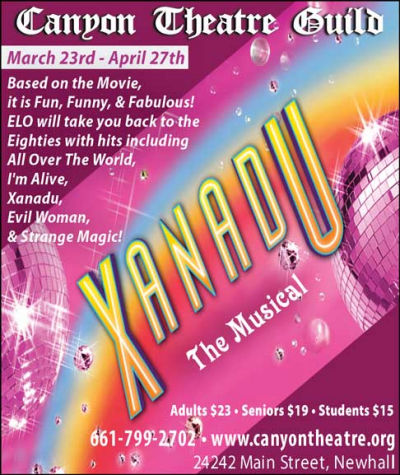
 It is very interesting to compare and contrast different productions of shows. How does a director take a show that was designed for the large Broadway stage, and adapt it for a regional theatre production, or an intimate theatre production, or a community theatre production. Each has different resources, different fly spaces, different actor quality, and certainly, different budgets. When I saw earlier this year that Canyon Theatre Guild was doing Xanadu: The Musical, I was intrigued. I had last seen it in 2012 at a tiny black box theatre in Hollywood, back when Doma was a theatre company (it is currently an “Arts Complex“, with theatre “coming soon”). I had been coming off a series of camp musicals, having just seen Silence: The Musical the week before. So I was curious: How would a community theatre company tackle this admittedly camp piece. Train wreck or a success? So I placed a hold on my calendar waiting for tickets to go on sale. Then I learned that an actor-friend from REP days was cast in the show (George Chavez). George is great in anything he does, so this was a two-fer: I’d get to see a different adaptation of a show, and I’d get to see a show with George in it. Win-win.
It is very interesting to compare and contrast different productions of shows. How does a director take a show that was designed for the large Broadway stage, and adapt it for a regional theatre production, or an intimate theatre production, or a community theatre production. Each has different resources, different fly spaces, different actor quality, and certainly, different budgets. When I saw earlier this year that Canyon Theatre Guild was doing Xanadu: The Musical, I was intrigued. I had last seen it in 2012 at a tiny black box theatre in Hollywood, back when Doma was a theatre company (it is currently an “Arts Complex“, with theatre “coming soon”). I had been coming off a series of camp musicals, having just seen Silence: The Musical the week before. So I was curious: How would a community theatre company tackle this admittedly camp piece. Train wreck or a success? So I placed a hold on my calendar waiting for tickets to go on sale. Then I learned that an actor-friend from REP days was cast in the show (George Chavez). George is great in anything he does, so this was a two-fer: I’d get to see a different adaptation of a show, and I’d get to see a show with George in it. Win-win.
As I noted last week, seeing a show for a second time awards me the luxury of not having to write the synopsis, or my thoughts on the book, unless they are different. The following is cribbed from the 2012 review; only the links and a couple of minor things have been changed to reflect changes in the times:
The 1980s were an interesting time. I know — I was there, in college, at UCLA. Olivia Newton John was at the top of the pop charts, and was coming off her success in the film version of the musical “Grease“. Her next film, however, was a box office disaster (although the album went double platinum): “Xanadu“. Xanadu, which also starred Gene Kelly in his last non-documentary performance, told the improbable story of Sonny, a record jacket artist. Sonny thinks his art is going nowhere and is about to give up when he is to paint an album cover for a group called The Nine Sisters. The cover features a beautiful woman passing in front of an art deco auditorium; this same woman collided with him earlier that day, kissed him, then roller-skated away, and Malone becomes obsessed with finding her. He finds her at the same (but now abandoned) auditorium. The woman is Kira, and she inspires him to revive the theatre and turn it into a roller disco. Kira is, in reality, Terpsichore, a greek muse, come to Earth disguised with roller skates and an Australian accent. She also inspired Danny Maguire, who originally built the threatre. The story goes on from there — you can read the full synopsis on Wikipedia — but it gets sillier. The only redeeming aspect of the movie was the music — all Olivia Newton John and Electric Light Orchestra (ELO). For the stage production, the music is credited to Jeff Lynne (who wrote the ELO songs) and John Farrar (who wrote the Newton-John songs). There were a few additional songs interpolated into the stage production.
In the mid-2000s, original producer Rob Ahrens came to book-writer Douglas Carter Beane with an idea.. an idea to take the film Xanadu and put it on stage. After a number of drafts and rewritings (all detailed in the liner notes to the CD) they came up with a book that kept the basic plot of the movie, but added elements of Clash of the Titans and more Greek mythology. The end result was a story whose goal was just to have fun: it could be self-referential and break the fourth wall; it could be a commentary on the state of the arts in the 1980s (a year that saw Barnum and Evita nominated as the best musicals), as well as a commentary on the state of society. In other words, it was fluff that knew it was fluff, and decided that since it was fluff, it was going to have fun.
The end story was as follows (edited down from Wikipedia): Chalk artist Sonny Malone is dissatisfied with his sidewalk mural of the Greek Muses and determines to kill himself. On Mount Olympus, Clio (the muse of history) convinces her eight sisters to travel to Venice Beach (rising out of the sidewalk mural) to inspire Sonny. Zeus’s rules require that Muses must always be disguised from mortals, so Clio wears roller skates and leg warmers, sports an Australian accent, and changes her name to Kira. Kira inspires Sonny to combine all the arts and “something athletic” all into one spectacular entertainment: a roller disco. Two of Clio’s sisters, Melpomene (the oldest sister, and the muse of tragedy) and Calliope (the muse of epics), are jealous that Clio is the leader of the Muses and that Zeus had promised “Xanadu” to her. . So they plot to discredit Clio and cause her banishment by tricking her into breaking one of Zeus’s rules: a Muse must not fall in love with a mortal, so they will curse “Kira” and Sonny to fall in love. Sonny finds a good location for the roller disco–a long-abandoned theater in Los Angeles called “Xanadu.” Inspired to locate the owner, he sets up a meeting with real estate mogul Danny Maguire. At the meeting, Sonny tries to convince Danny to donate the theater for the roller disco, because it would bring the arts to the district and drive up real estate values (yeah, like theatre does good things for a neighborhood :-)). But Danny scoffs, even though he had plans to open the theater himself, once upon a time, when he was inspired by an old love and dance partner of his, who looked suspiciously like “Kira,” named Kitty. But a flashback convinces him to redeem himself now by opening the roller disco with Sonny. Danny finds Sonny and tells him that if he can get the disco up and running in one day, he’ll give him 25% of the take from the Disco. Sonny finds “Kira” and tells her the good news. She is not impressed with the deal that he has cut. The evil sisters work their curse, and the winged Eros, along with “Mama Cupid”, shoots “Kira” and Sonny with the arrows of love. “Kira” is soon overwhelmed with guilt over her loving feelings and of having created her own art (a hand-drawn picture) alongside Sonny – both violations of Zeus’s restrictions on the Muses. With the help of some of the muses, “Kira” and Sonny fix up the old theater, and Danny agrees to go ahead with the opening. Clio realizes that she is falling in love with Sonny and tells him that she must leave. To make it worse for Clio, the evil sisters offer Danny piles of money if he will tear down the theater and build condos. Danny can’t resist and tells Sonny that the deal is off. “Kira” comes back to tell Sonny that she loves him, but the evil sisters tell her that she has broken Zeus’s rules, and that she must tell Sonny the truth. So “Kira” reveals all to Sonny, including that her name is Clio, but he does not believe her and is upset. He suggests that she is a crackpot. He also doubts that she really loves him, and she is angry and hurt. The evil sisters have triumphed, and Kira sets off for Mount Olympus to receive her punishment from Zeus. Meanwhile, Sonny and Danny discuss “Kira” and after seeing her in the sky, it all makes sense. Danny tells Sonny not to let go of his muse because of foolish pride as he once did back in the 1940s. Sonny, realizing that he really loves “Kira,” decides to find her – even if it means climbing Mount Olympus. I’ll leave the actual end open.
A silly story. As you can see, there were a number of changes from the movie. The mural aspect was brought back and the record album cover stuff was dropped (along with some stupid subplots). The Greek mythology aspects were strengthened, and the notion of evil sisters wanting to get even (common in Greek stories) was brought in. [The book allowed the director to expand] on this a bit more, adding in references to current Los Angeles and the current weather, as well as amping up the commentary on the state of the theatre. It worked, and worked well. The story itself ended up being a fun-filled romp.
At the opening of the Canyon Theatre Guide production, the director noted that attendees tended to fall into 3, perhaps 4 camps: (1) those who loved the movie and Olivia Newton John (and yes, there were a number of those there); (2) those that hated the movie and wanted to make fun of it (she called those “Xanadon’t”, but I must note that Zanna Don’t is a completely different, and excellent, musical); (3) those who are saying “Xanawhat?”; and (4) those who are there because of their subscription or they know someone in the cast. We fell into that latter category (although we are thinking about becoming subscribers; this would replace our “small theatre” subscription, as the little theatres tend not to do that model anymore, with some exceptions (GRT, Odyssey, Anteaus).
This raises the next question: How did CTG execute the show? Well, this is community theatre. There were some strong performances (the leads). There were some outstanding performances. There were some where you could see the counting in the head. There were a few where the casting was focused more on getting the right talent than 100% the right look. There were sound problems. Bra straps were visible, distracting from the costumes. But on the whole, it was an enjoyable production. Yeah, the story was camp (and knew it). Yeah, I still don’t like ELO ballads. But the cast brought a great energy and joy to the production, and that can help overcome the weaknesses of the underlying book. Plus, this is a show that is rarely done—this puts it in the category of “see if you are a show collector”. I also enjoy the camp and self-referential aspects of the show.
There were some outstanding performances. George Chavez, who played Sonny at our performance (he alternates with another actor) was great. George gets his energy from the audience, and enjoys roles where he can amp up the silliness, and this role played to those strengths. Jaran Real, as Little Sammy/Street Dancer, was just spectacular with his dance moves and tapping; this is a kid with talent that will go far some day. I’m not sure which lead we had as Kira, but whomever it was, she had a very strong voice. Overall, the singing was very strong, the dancing was a bit more mixed. Characterization was good.
So, should you see this show? I could echo the director, but I won’t. If you look fondly on the 1980s, see this. If you liked the movie Xanadu , then see this (I’m looking at both of you that liked it). If you like to see rarely produced musicals, see this. If you like camp and self-referential musical, see this. If you want to see something silly, see this.
On the other hand, if you want a book that makes sense, say home. If you don’t like (or can’t at least tolerate) ELO, you should probably stay home.
We enjoyed it. But if a production of Xanadu: The Musical came around again, we’d probably pass. Twice is enough. Then again, if George is in that show… we might change our minds.
Xanadu: The Musical runs at Canyon Theatre Guide through April 28. Tickets are available at the Canyon Theatre Box Office. Next up at CTG: The Play That Goes Wrong. Again, it will be interesting to see how a regional theatre company (the level of company that is actually spoofed in the production) does with the show, compared to the Broadway tour we saw at the Ahmanson.
———
Xanadu: The Musical. Book by Douglas Carter Beane; Music and Lyrics by Jeff Lynne & John Farrar. Based on the Universal Pictures film. Screenplay by Richard Danus & Marc Rubel.
Cast: Erica Brauer / Tasha Taylor Kira (Clio); George Chavez / Zachary Santolaya Sonny Malone; Ted Tobin Danny Maguire; Jaran Real Young Danny, Street Dancer; Abi Bowling Melpomene; Jenise Spiteri Calliope; Rachel Logan Erato; Sophia Bellefeuille Euterpe, Andrew Sister; KiSea Katikka Terpsichore; Miranda Grace Massey Thalia; Lewis E. Powell III Hermes, Greek Chorus; Anna Dawahare Cupid, Greek Chorus; Matthew Gatewood Zeus; Michael Davies Zeus (Alternate); Sandra Salvatori Hera, Greek Chorus; Donna Marie Sergi Thetis, Greek Chorus; Faith Violet Aphrodite, Andrew Sister, Greek Chorus; Jack Matson Centaur, Greek Chorus; Brian Mann Centaur, Greek Chorus; Felicia Grady Medusa, Greek Chorus; Jacqueline (Jack) Rich Aglaope, Andrew Sister, Greek Chorus; Kelly Tomlin Molpe, Urania, Greek Chorus; Patty Assiante Polyhymnia, Peisone, Greek Chorus.
Production and Creative: Ingrid Boydston Director; Claudia Alexopoulos Asst. Director, Properties; John Alexopoulos Co-Set Designer; Carla Bellefeuille Vocal Director; Candra Bond Co-Costumer; Kasmira Buchanan Choreographer; Doug Holiday Co-Set Designer; Sam Kort Asst Choreographer; Michael T. Smith Co-Lighting Designer; Joe Swartz Stage Manager, Co-Lighting Designer; Clinton Kyles Guest Tap Choreographer; Patti Assaiante Roller Skate Consultant.
♦ ♦ ♦
Administrivia: I am not a professional critic. I’m a cybersecurity professional, a roadgeek who does a highway site and a podcast about California Highways, and someone who loves live performance. I buy all my own tickets, unless explicitly noted otherwise. I do these writeups to share my thoughts on shows with my friends and the community. I encourage you to go to your local theatres and support them (ideally, by purchasing full price tickets, if you can afford to do so). We currently subscribe or have memberships at: Center Theatre Group/Ahmanson Theatre; Broadway in Hollywood/Pantages Theatre; Pasadena Playhouse; Geffen Playhouse (Mini-Subscription); 5-Star Theatricals. We’re looking for the right intimate theatre to subscribe at — it hasn’t been the same since Rep East died (it’s now The Main, and although it does a lot of theatre, it doesn’t have seasons or a resident company), and post-COVID, most 99-seaters aren’t back to doing seasons (or seasons we like). I used to do more detailed writeups; here’s my current approach.
Upcoming ♦ Theatre / ♣ Music / ◊ Other Live Performance – Next 90ish Days (⊕ indicates ticketing is pending):
- April: ♦ Spongebob Squarepants – The Musical at CSUN Theatre; ♣ Gordon Goodwin and the Big Phat Band at BofA/Kavli Theatre in Thousand Oaks.
- May: ♦ Hands on a Hardbody at Charles Stewart Howard Playhouse; ♦ Girl from the North Country at Broadway in Hollywood/Pantages; ♦ The Play That Goes Wrong at Canyon Theatre Guild (⊕)
- June: ♦ Jelly’s Last Jam at the Pasadena Playhouse; ♦ A Strange Loop at CTG/Ahamanson Theatre; ♦ Mrs. Doubtfire at Broadway in Hollywood/Pantages; ♦ You Can’t Take It With You (⊕) at Group Rep; and potentially some ♦ Hollywood Fringe Festival shows, although June is pretty well booked already.
- July: ♦ Peter Pan at Broadway in Hollywood/Pantages; ♦ The Sound of Music at 5-Star Theatricals;
- August: ♦ Clue at CTG/Ahamanson Theatre; ♦ Company at Broadway in Hollywood/Pantages;
On the Theatrical Horizon:
Morgan-Wixson Theatre in Santa Monica has announced their Mainstage 2024 Season, and it includes Bat Boy the Musical running Sept 28 through October 18. We saw Bat Boy back when CSUN did it in 2014; it is a wonderful musical about how a society treats outsiders. I also just learned about a theatre company in Fullerton, Maverick Theater. They are doing Evil Dead: The Musical , which is a hoot if you’ve never seen it (we’ve seen it twice). They also have some interesting other stuff on their season, and we might drive down for Santa Claus Vs The Martians in November. I also just learned that Jason Alexander will be doing Fiddler on the Roof , directed by Lonny Price, at La Mirada in November. Interesting….


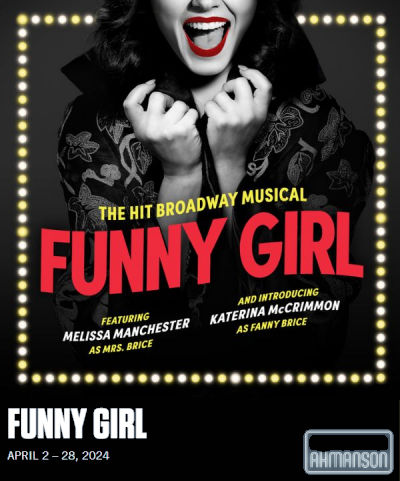
 Some musicals get revived again and again and again. Certainly this is true of classics from Sondheim (cough, Gypsy, cough Sweeney Todd) and of course, Rogers and Hammerstein (cough, Sound of Music). But some shows are so tied to a particular artist that they are very hard to revive. You’re unlikely to see a revival of the Tony-award winning The Magic Show for that very reason—no one can duplicate Doug Henning. For the longest time,
Some musicals get revived again and again and again. Certainly this is true of classics from Sondheim (cough, Gypsy, cough Sweeney Todd) and of course, Rogers and Hammerstein (cough, Sound of Music). But some shows are so tied to a particular artist that they are very hard to revive. You’re unlikely to see a revival of the Tony-award winning The Magic Show for that very reason—no one can duplicate Doug Henning. For the longest time,  And with that quarter I just dropped in the slot machine of life at the Tropicana (
And with that quarter I just dropped in the slot machine of life at the Tropicana (
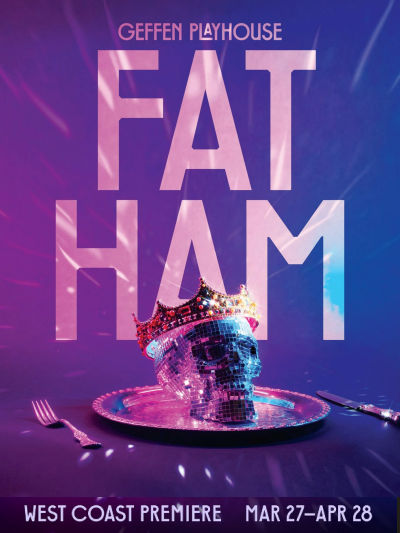
 Going into Fat Ham, which we saw last night at the
Going into Fat Ham, which we saw last night at the 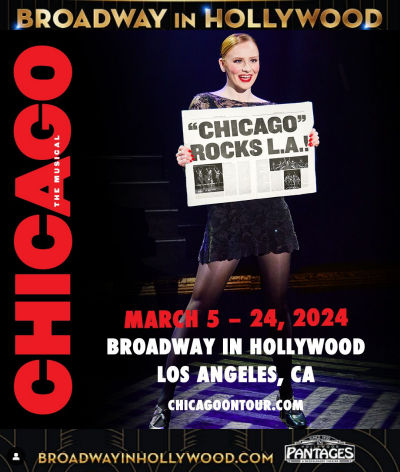
 It’s been a hot minute, hasn’t it, Chicago?
It’s been a hot minute, hasn’t it, Chicago?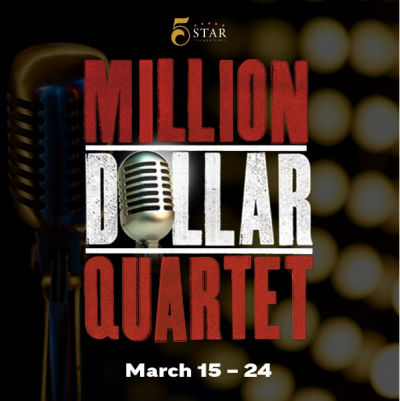
 This afternoon, we trudged out to
This afternoon, we trudged out to 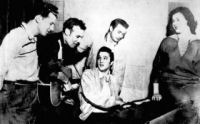
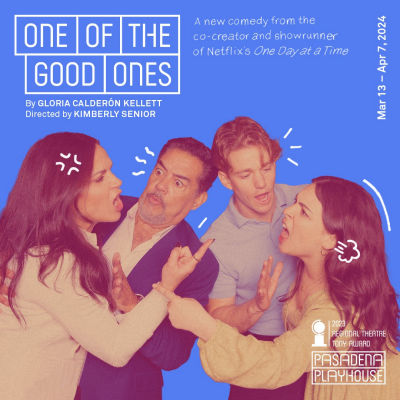
 As the World Premiere of the new play
As the World Premiere of the new play  Added some links for the National Pony Express Trail. This impacted the following routes: Route
Added some links for the National Pony Express Trail. This impacted the following routes: Route